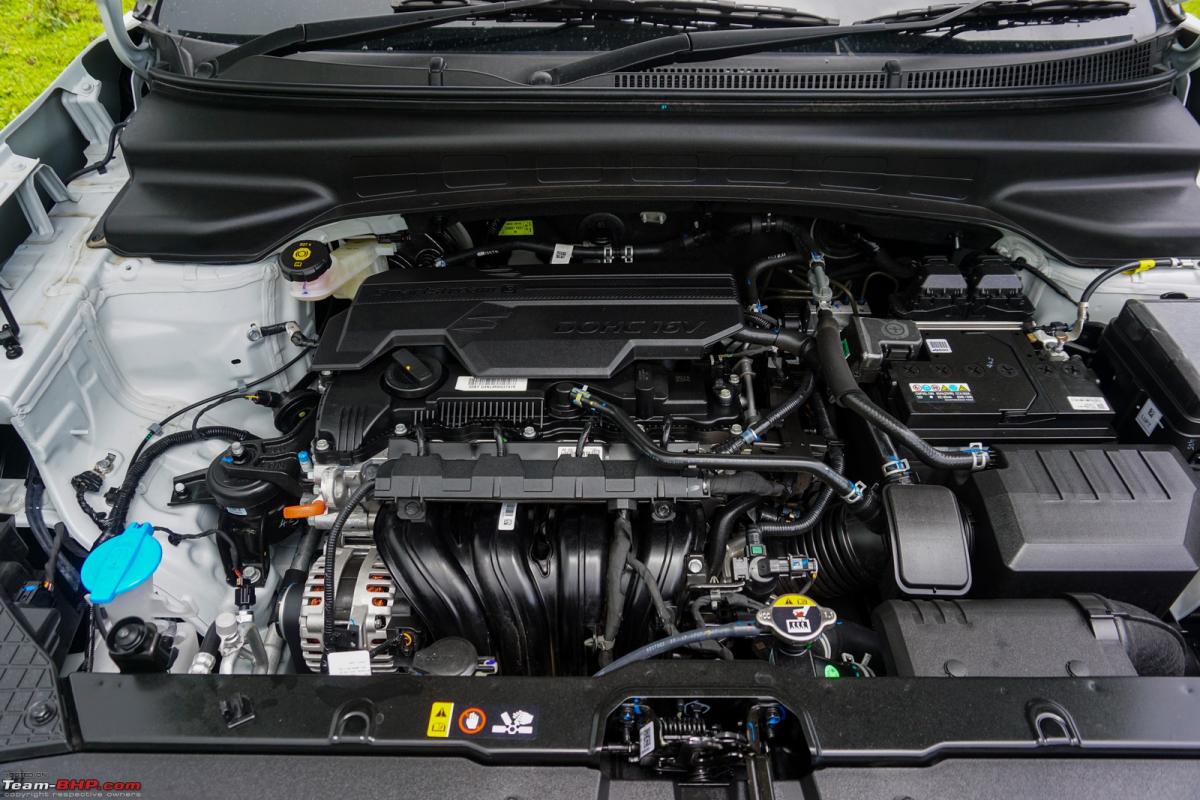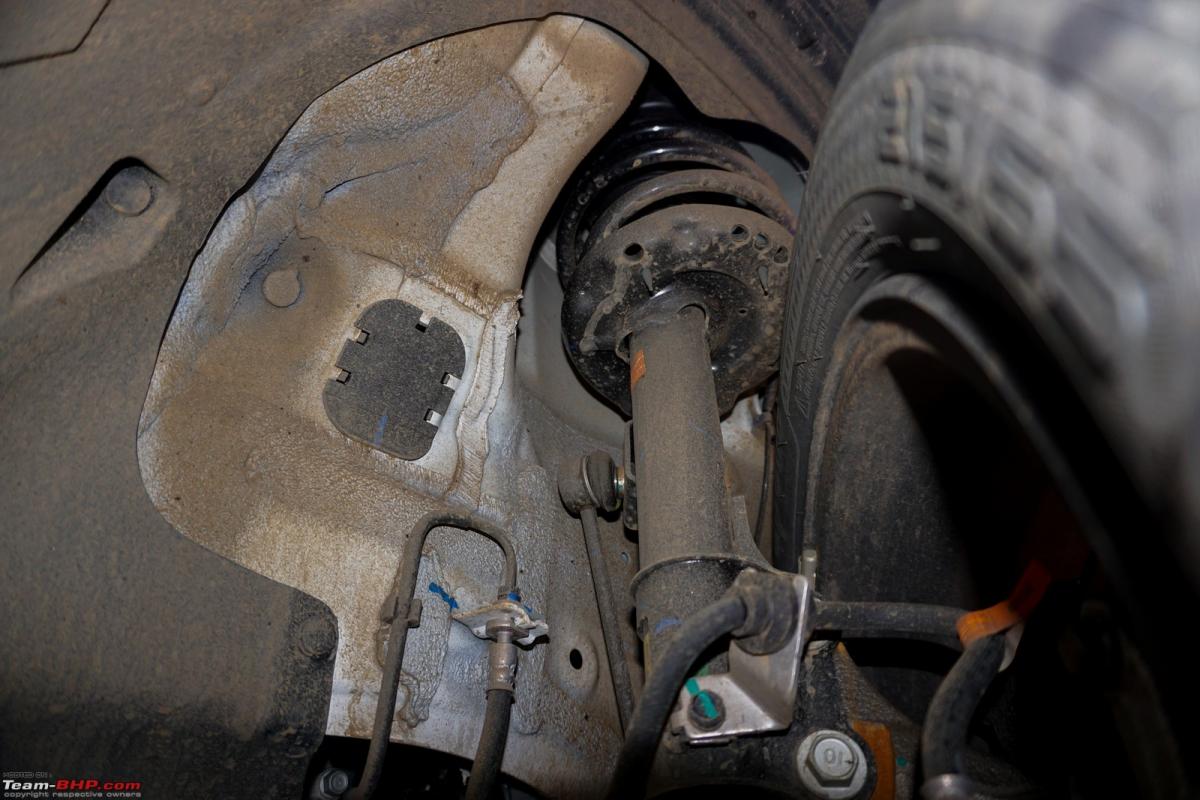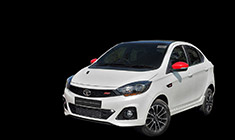News
New Hyundai Alcazar 2021: Observations after 1 day of driving
Hyundai has used a relatively big 2.0-litre NA petrol engine to power the new Alcazar.
Driving the 2.0L Petrol AT
2.0 naturally aspirated petrol engine makes 157 BHP @ 6,500 rpm and 191 Nm @ 4,500 rpm:

Hyundai has used a relatively big 2.0-litre NA petrol engine to power the new Alcazar. We feel this is to 'differentiate' the product, but the Creta's 1.4-litre turbo-petrol is quite impressive too. GTO says that he now prefers the power delivery of turbo-petrols over naturally-aspirated ones. One big advantage though is the tried & tested torque-converter AT on the Alcazar 2.0-litre; the Creta 1.4's dual-clutch AT might be troublesome in the long run (many BHPians are already reporting issues). This 2.0L petrol engine is shared with the Elantra and uses an aluminium block. It develops power & torque figures of 157 BHP (@ 6,500 rpm) and 191 Nm (@ 4,500 rpm) and is offered with 6-speed MT or AT options. Before we even get started on the nature of this engine and gearbox, let's get one thing out of the way - If you are looking for something to tickle the enthusiast part of your brain, just go for the Creta 1.4 turbo-petrol DCT. It's a lot more fun to drive due to the power delivery of that turbo-engine, the fast DCT, tighter suspension setup and smaller size.
We got to drive only the AT variant and considering that most premium segment customers prefer slushboxes, this will be a popular one (also more reliable than DCTs). This is a simple old-school torque converter unit which, along with the 2.0-litre engine, makes the Alcazar smooth & easy to drive. Of course, as we have seen with other torque-converter Hyundai ATs, it's not a fast-shifting transmission. The focus here is on comfort, not hard driving. The AT goes about its business in a relaxed manner and does a competent job of getting the car from point A to point B with zero fuss. The Alcazar gets 3 driving modes - Eco, Sport & Normal. These modes alter the engine and transmission logic to suit the driver's preferences.
The Alcazar moves off the line very smoothly upon releasing the brake. With a light foot on the accelerator, one cannot feel any jerks at all while the shifts are being executed. Together with the light steering, the automatic is a breeze to drive in the city. Owners will enjoy its smooth, refined nature. Press the accelerator hard and the transmission responds at times, but gets confused at others. Sometimes, there is a delay of over a second before a downshift is executed. Moreover, the Alcazar also tends to shift gears excessively with a heavy foot. Our advice = it's best to drive this car with light to medium-level throttle inputs. That's what the engine & gearbox combination enjoy the most (unlike the Creta 1.4L DCT which loves being pushed hard).
Like normal mode, Eco is very useable in the city. Owners will probably use this mode the most, as a big petrol engine + TC AT usually mean low fuel economy. As city driving speeds are low, the duller performance isn't a handicap and the car can easily take care of commuting duties.
With 157 horses on tap, performance is satisfactory on the highway. There is more than enough muscle to carry a full load of passengers as well. However, the car doesn't feel aggressive to drive like the Creta 1.4. The Alcazar is at its best in the hands of a driver who gradually builds speed. The engine revs freely and power delivery is linear (like most NA petrols). You can cruise at 100 km/h with the engine revving at a relaxed 2,100 rpm. In a pedal to the metal driving style, the engine revs till ~6,500 rpm before upshifting. But again, keeping the relaxed nature of this transmission in mind, it's best to avoid an aggressive driving style. Overtaking is quick & easy at most times, although in some situations, the gearbox doesn't downshift and that can catch you out. Here, Sport mode comes in handy. It makes the engine hold onto revs a little longer before shifting up. The throttle and engine responses are sharper in Sport. For quick overtaking, this is the mode I would recommend.
You can use the manual shifting arrangement by pulling the gear lever to the right and pushing the lever to the front to upshift and back to downshift. Or you can just pull on the paddle shifters. In manual mode as well, the gearbox is tuned conservatively and it won't allow you to downshift aggressively. On many occasions, it didn't even allow us to downshift at merely 3,600 rpm! Honestly though, you should simply let the electronics do the shifting. If you're in the mood for speed, engage Sport mode (in D). Of course, manual mode can come in handy when you need engine braking (e.g. going downhill) or when you want to bring the engine into its powerband before an overtaking move.
Noise, Vibration & Harshness (NVH)
The overall driving experience is very smooth & refined. It is only at high rpms (over 5,000 rpm) that the motor gets very boomy. If you are continuously redlining it, your passengers might find the boominess irritating.
Mileage & Fuel Economy
Hyundai claims a fuel economy rating of 14.2 km/l for the AT variant (14.5 km/l for MT). Big petrol engines & torque-converters are never FE champions. Be prepared for that, especially in a world where a litre costs 100 bucks! If you are going to drive a lot, we will strongly recommend the economical diesel instead.
Suspension

Ride Comfort
The Alcazar rides on a McPherson strut suspension up front and a torsion beam setup at the rear. Start driving and you will immediately notice that the Alcazar rides in a comfortable manner. We were worried that Hyundai would stiffen up the suspension too much for the added weight (make it like the Seltos), but that's clearly not the case here. Low-speed ride quality is acceptably absorbent and even large potholes are handled well. IMHO, the suspension tune is perfect for a 6/7 seater like the Alcazar. It's neither too soft, nor too stiff.
The Alcazar rides on 215/55 section tyres on 18-inch wheels and has a recommended tyre pressure of 33 PSI (35 PSI - full load) which is the same as the Creta. The base variant riding on 215/60 R17 tyres will offer a cushier ride.
Handling & Dynamics
Out on the highway, the Alcazar stays composed. Its road manners are neutral, just as you would expect from a 3-row family crossover. You can cruise at highway speeds quite comfortably. However, it doesn't ride as flat as the Creta and high-speed undulations do make the car feel a bit wallowy.
Throw the Alcazar around a corner and it responds better than you'd expect from a 6/7 seater. Yes, there's body roll, but it's within acceptable limits (but not sporty like a Kia Seltos). On curves, the car will hold its line and a big contributor to this are the Apollo Apterra Cross tyres. They provide good levels of grip and suit the car well. Also, good to know that the Alcazar has electronic stability control to help in emergency situations.
Steering
The steering is one finger light in the city and weighs up nicely as you gain speed. Don't expect much feel or feedback though.
Braking
Rear disc brakes are standard across all variants, which is a good thing. They work well in normal as well as emergency conditions and owners won't complain. They do the job.
Continue reading the discussion on the 2021 Hyundai Alcazar on our forum.



.jpg)



.jpg)


















